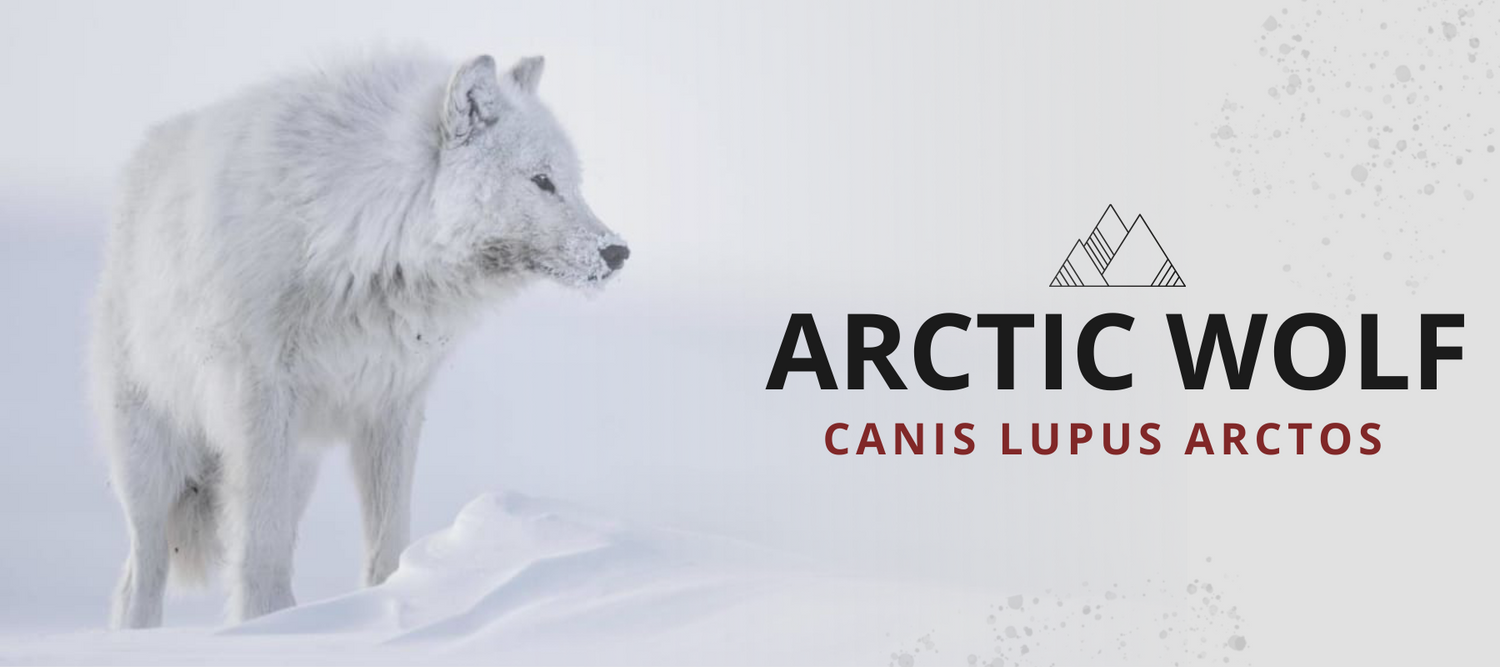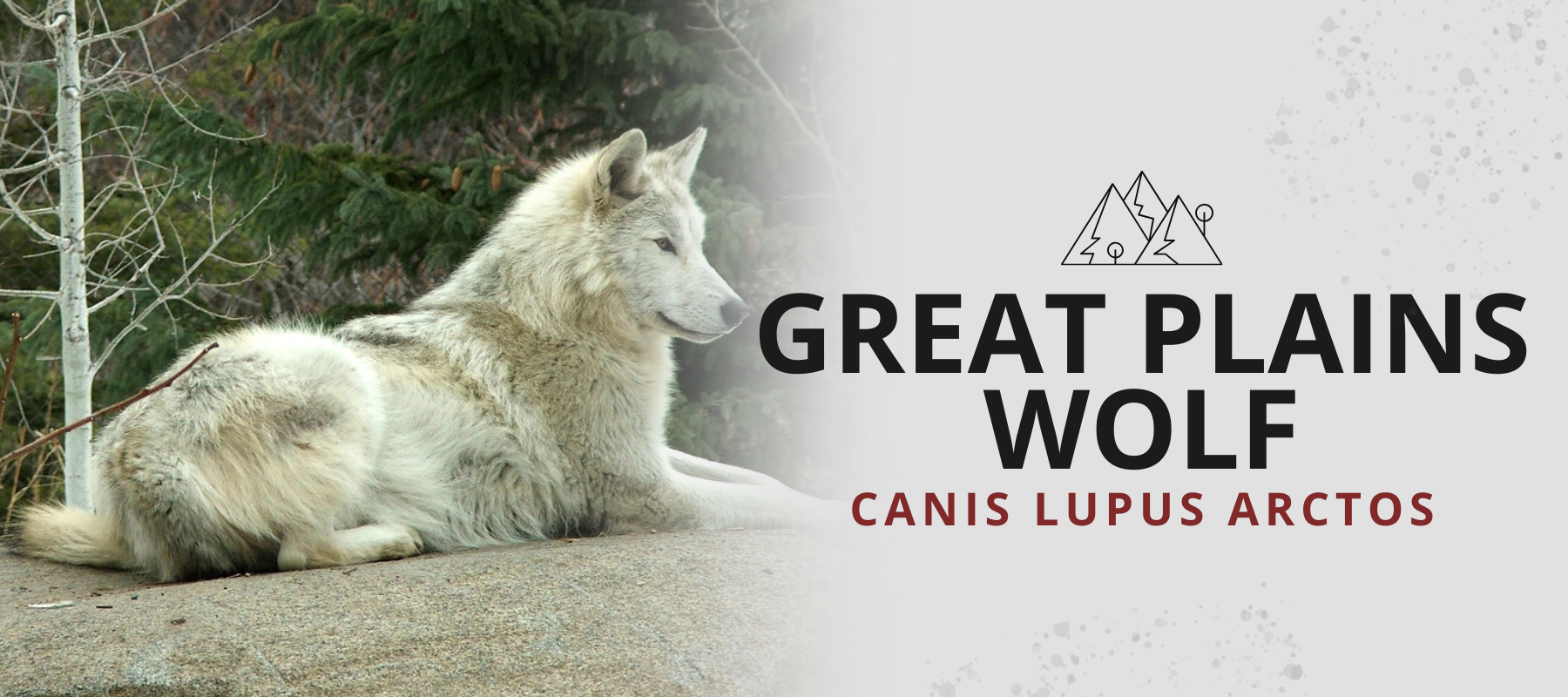
ARCTIC WOLF SPECIES
The Arctic wolf (Canis lupus arctos) is a mammal belonging to the canid family. Geographically, this subspecies of the grey wolf lives in the cold lands of Northern Hemisphere. The Arctic wolf is capable of withstanding years of extreme cold, up to five months of darkness per year, and weeks without food. It is one of the few mammals that can tolerate such extreme weather conditions without having to hibernate.
- Common name: Arctic Wolf
- Scientific name: Canis lupus arctos
- Other names: Polar wolf, white wolf
- Specie: Grey wolf
- Type: Mammals
- Diet: Carnivore
- Size 3,2 to 5,9 feet
- Weight: 70 to 175 lbs
ARCTIC WOLF DESCRIPTION
Not to be confused with the Arctic fox, the Arctic wolf is easily recognized because it is the only subspecies in which all specimens have thick and white fur. This fur is a perfect camouflage in the snow and keeps this canid warm in polar temperatures.
Arctic wolves have ears that are slightly smaller and more rounded than those of other wolves, and their snout is slightly shorter. These adaptations, as well as the fact that the legs are slightly shorter, limit the exposure of the extremities to the cold.
Its weight is approximately 70 to 175 lbs. The greater the body mass, the more heat is retained. They can withstand temperatures that often drop below -57 degrees Celsius in constant wind during winter months.

ARCTIC WOLF HABITAT
There are very few Arctic wolves left in the world. This white wolf of Arctic Tundra is actually on the red list of endangered species. The only places where it is still possible to observe them are Ellesmere Island, Banks Island and northern Siberia. Before, the lands of the American continent were inhabited by white wolves. Specifically in North America.

ARCTIC WOLF DIET
Arctic wolves hunt alone as well as in packs. This carnivore wolf hunts rodents like lemmings, hares and other herbivore. But to kill larger animals like caribou or muskoxen, they hunt in packs. The white wolf can also hunts others arctic animals if necessary for the survival.
They kill their prey by biting it on the back of the neck with their powerful canine teeth. Because of the climate and the difficulty to find food, they leave nothing of their prey behind, devouring the entire victim down to the skin, hair and bones. Arctic wolf is at the top of the food chain.

ARCTIC WOLF BREEDING
Arctic wolf is a social animal that lives in pack with a hierarchy. During the mating season, only the dominant male (alpha male) ensures the offspring with the alpha she-wolf. The wolf pups born between May and June. The female can only give birth and reproduce once a year.
Scientists agree that this is one of the wolf's adaptations to the cold, as cubs born shortly before winter have no chance of survival in extreme conditions of the Arctic Circle.
After a gestation period of 9 weeks, the female gives birth in a den to a litter of 4 to 8 cubs weighing 400 to 500 g.

ARCTIC WOLF BEHAVIOR
Close observation of the Arctic wolf has provided an example of many previously unknown behaviors that are also applicable to other wolf subspecies like the gray wolf or Mexican wolf.
In winter, they are very difficult to see because their white coat allows them to stay camouflaged in the vast snowy country. Moreover, they limit their movements and remain motionless on their watchtowers, high up above the valleys. Their hearing and sense of smell are very good. On the other hand its sight, although excellent, is less developed.
The wolf moves around its territory always following the same routes (game trails, lake shores, river banks). They take care to mark and delimit them by depositing urine, droppings or secretions. These deposits are often made on rocks
Arctic wolves live in packs, like other wolves. The low density of prey means that it has a huge territory covering up to 3,000 km². They have no natural predators other than man.
ARCTIC WOLF CONSERVATION
In early spring 2007, Governor Sarah Palin and the Alaska Department of Fish and Game, headed by Denby Lloyd, announced a $150 bounty for each wolf killed, another incentive to kill this canine animal.
This bounty clearly violates the regulations in force since no credible explanation could be given to justify such a program which participated to drastically reduce the wolf population. The Alaska Wildlife Alliance, along with two other NGOs fighting for the conservation of the species, decided to file a complaint in order to stop this project. The appeal was heard and the Alaska State Court put a definitive end to the program.
In order to safeguard the species, many zoos and wildlife gardens welcome Arctic wolves in captivity. This was notably the case at the Pesheray zoological domain, where a pack of six Arctic wolves was welcomed in 2009 in order to participate in the reintroduction of this fabulous wolf specie.
Whatever the initiatives, there is no small effort to contribute to the arctic wolf preservation! If you are in love with this species, you can contribute to the help for the preservation by wearing the white wolf t-shirt or the arctic wolf hoodie to keep you warm during the winter.
These magnificent wild Arctic wolves are one of the many species of canis lupus. To learn more about these magnificent wolf species, we recommend our article on great plains wolf.




